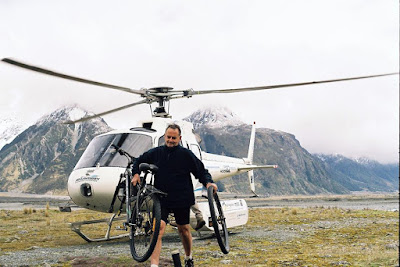Here I am standing at the end of my Devonport street. I'm on the "apron" of the "T-intersection". It was relaid in hot mix by Council contractors about a month ago. Maintenance I guess.Took them several days. Between 10 and 15 high-vis clothed men on site. Lots of technology. Utes and about a hundred witches hats.
I'd driven over it for a few years and hadn't seen any problem with it. But I've learned that's often the case.
That's not my beef here.
I'd driven over it for a few years and hadn't seen any problem with it. But I've learned that's often the case.
That's not my beef here.
These cones are still outside my front gate. I have phoned Council's hotline. They assure me they will be taken away in 10 working days. So it's likely they'll be gone by Christmas. They make the street a bit Christmasy though don't you think?
That's not my beef here either. (Nor is it with my neighbour across the street hard at work, or his cat, or with the boat - this is Devonport after all.)
Between 1998 and 2004 I was Chair/Deputy Chair of North Shore City Council's Works and Environment Committee, and also on the Devonport Community Board. Street maintenance works like this apron were routinely done then too. A wise councillor told me then that anything the council did - road maintenance, mowing of lawns, sewer pipe repairs for example - would cost double what it would cost done by the private sector. Over time I came to understand why that was.
Public money and public assets on public land are different beasts to manage compared with what happens on private land with private infrastructure. There is consultation with local residents about timing, there is a need for annual budget planning that has to be consulted and agreed, and then, there was even consultation about whether the apron would be done in hot mix or chip seal.
But it's different again, and far more costly today, and you won't see an elected representative anywhere near the work. They are not involved anymore. They don't know what's happening in the urban environment where they have been elected to represent community interests. They're not there to watch over the wise use of ratepayer funds.
Council amalgamation and remote, arms length Council Controlled Organisations, are all part of the regional institutional change that is at the root of what is leading major local cultural change.
In the bad old days there were several "small contractors" who did this sort of road maintenance. Locally based operations, overseen by a local Council area manager. Usually the road section would be closed while it happened. Notices would advise of this, and residents would take slightly longer to get from "A" to "B". So there was no need for hundred of witches hats - but more importantly - there was no need for several men to be paid to direct the desultory traffic movements that happen in the back-blocks of Devonport. It was much cheaper.
I can hear the moans and complaints this posting will cause in AT (Auckland Transport) from here. They will say the work is being done to a higher standard. They will say that Devonport residents are being less disturbed by the work. They will say there are fewer safety risks. And most of that might be true. But that isn't the issue.
Not everybody is interested in the maintenance of their pipes, roads, libraries and parks. But you'd be surprised how many are. (One of my long standing memories visiting my daughter in Sapporo Japan, was to see that road works and pipe works were done by local pensioners and neighbours chatted with them on the way to the shops.) There is just a little more alienation of community involvement that happens when shared assets are maintained and managed remotely. A little more atomisation and separation. An emphasis on private lives. A loss of opportunity for community engagement. And at increased cost as well! Talk about a lose-lose outcome.
We are steadily losing through amalgamation parts of the institutional fabric that I associate with life and social development in New Zealand towns - socially connected urban communities.






















